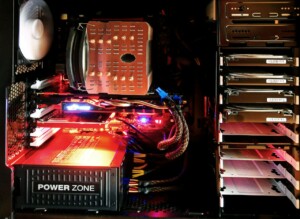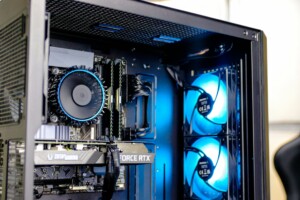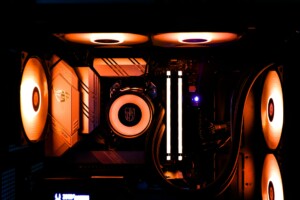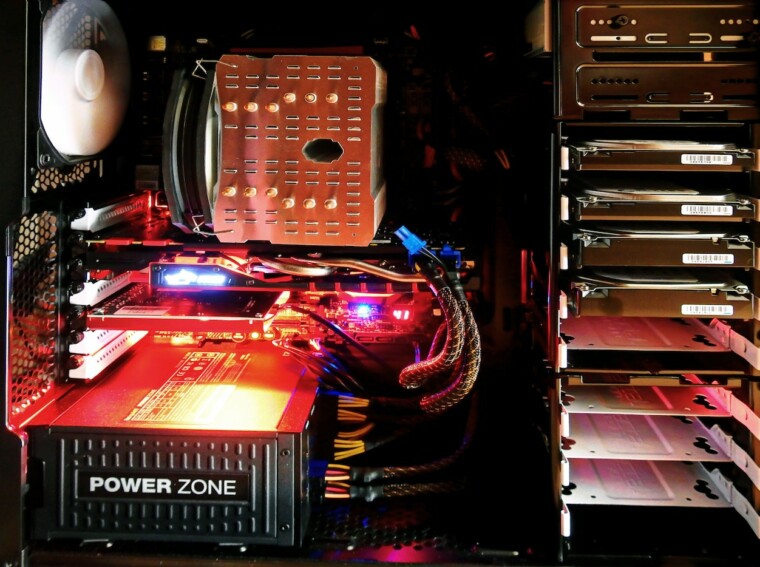
Realistically, a desktop computer with a good graphics card is going to be better for gaming than a computer with an IGP. This is because of the sheer raw performance that dedicated GPUs have on CPUs with integrated graphics. However, there are some circumstances where using an IGP will provide a superior experience. In this article we’ll explore what those circumstances are, and which CPUs will provide you with the best experience.
First of all, here are some quick definitions:
– UMA : Unified Memory Architecture – IGP : Integrated Graphics Processor – IGPs are graphics processors embedded into the CPU die itself, rather than on a separate chip. This means they have access to the same memory as the main processor, rather than having to talk to the chipset for allocating space on its own. – NUMA : Non-Unified Memory Architecture – IGPs on NUMA CPUs still have access to their own ‘pool’ of memory, which does not share space with the system memory. This is necessary because the CPU cores themselves have a limited amount of memory bandwidth each, and can quickly become bottlenecked if they have to access system RAM instead.
– Cluster : A group of NUMA nodes which share a socket – Socket : The physical form factor which holds all the various components of your computer together. There are many different types. For more information see : Types of CPU socket
The benefits of using an IGP for gaming are firstly that there is no need to spend extra money on a good GPU, if you already have one on your motherboard. Secondly, IGPs tend to keep the system more cool and quiet than a discrete card would, thanks to their low power consumption even when compared to low-end discrete cards.
This brings us to the first caveat : IGPs perform worse than dedicated GPUs, even when both are using system RAM for memory allocation. It is simply the fact that graphics cards have more raw power available, and can take better advantage of GDDR5 or HBM . The second problem with using an IGP for gaming is more of an issue with some IGPs than others – the fact that IGPs almost always have to use the system RAM for memory allocation, which decreases performance.
So really, what sort of hardware can we expect to be able to game on? Well firstly, you’re going to need a socket LGA 1151 motherboard. This is because all of Intel’s 8th Generation IGPs are UMA architectures, which means that they cannot be paired with a discrete GPU, and that the system RAM must be shared. On the other hand, LGA 2066 sockets such as X99 or X299 can use both IGPs and GPUs at the same time without issue.
Secondly, you’re going to need an AMD socket AM4 motherboard. This is because all of AMD’s APUs are NUMA architectures – they do not share memory with the main processor or other components on the motherboard, and thus when there is a discrete GPU present in the system RAM must be shared between all three components.
Now that we’ve got our hardware sorted out, we can look at some specific setups and their performance.

Intel IGP Gaming Performance:
Samsung NUC7i3BNH ( Kaby Lake ) Intel UHD 630: 1366×768 resolution: 50-60 FPS Medium settings in most games* Lenovo IdeaPad 320s ( Kaby Lake ) Intel UHD 620: 1366×768 resolution: 50-60 FPS Low settings in most games Lenovo Legion Y520 ( Kaby Lake ) Intel UHD 630: 1920×1080 resolution: 45-60 FPS Medium to high settings*

Lenovo IdeaPad 330s ( Coffee Lake ) Intel UHD 630: 1920×1080 resolution: 30-50 FPS Medium settings in most games Lenovo Legion Y530 ( Coffee Lake ) Intel UHD 630: 1920×1080 resolution: 30-50 FPS High / medium settings*
Article Tags
blizzard jesse meschukhollister theverge
sony playstation 14.8m fymochizukibloomberg
databricks 27b databricks


